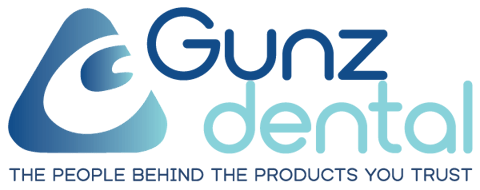At the beginning of 2020, things looked great for the dental industry. The economy was booming, unemployment was at an all-time low, and Patients on both sides of the ditch were spending money on everything, including dental care.
As revenues expanded, we noticed some innovation started to take place in the dental office. For some the focus was on a modern patient experience and adopting the trend of consumer-focused healthcare experiences. At Gunz Dental we too were looking to adopt a more consumer focused buying experience for the practice.
The more business-savvy dentists who we deal with were placing less emphasis on providing services for insurance companies, putting their business and clinical objectives first. These changes were happening on an individual scale, but they had the potential of having a huge effect on the industry. In contrast practices with 5 or less years in business were focused on offering cut price dentistry (sic) and being listed as a preferred provider for one or more dental insurance providers. These businesses may be the ones that will struggle most as we get to the other side of the pandemic.
Then came COVID-19, and all lives were turned upside down in a matter of weeks.
One big change in the past few weeks in response to the current COVID-19 crisis & the much need technological advancement, the ADA has recently released Teleconsultation item number (919) for the dental professionals. Details here: https://bit.ly/2RDUBk2 Of course, teledentistry is still in infancy state but this formalisation and recognition by the board has certainly paved a way for modern dentistry and healthcare. I know some of the more commercially astute of you, who have been asked to stay home, started to adapt by leaning on technology that enables patient communication from home.
After all, patients can’t tell their teeth to stop having issues just because dentist offices are closed. Statistics from the United States are that every 15 seconds, someone goes to the emergency room for a dental-related issue, so it’s critical that patients get dental care away from the strained medical system, if possible. The last place a patient wants to be right now is the hospital, and that’s an excellent motivator for that patient to embrace new telehealth solutions. COVID-19 has led some dentists to embrace innovative teledentistry solutions and other technology to make sure patients get the support they need. While clearly there is still a long way to go in learning how to effectively use teledentistry, some have rallied around the common goal of helping patients.
Patients don’t know what is nonessential. They have a concern, and they want someone to look at it and ease their fears. Dental providers, know that many dental diseases and conditions don’t have pain as a symptom in the beginning. Maybe, Hygienists and Therapist, already trained extensively in patient communication can connect and triage the patient who is unable or unwilling to get to a dental office for treatment, provide reassurance for non urgent cases, provide/organise expert advice to manage emergency cases, organise a referral to a specialist.
Teledentistry is making a difference by being able remotely to service underserved populations nationally (and even internationally) via a network of healthcare providers. It has applications in nursing homes, hospitals, and schools, too, when getting to a dental office is next to impossible.
Teledentistry can promote the integration of dentistry into the broader healthcare system to improve oral-systemic care. It can help change the concept that oral health is separate from overall health.
The upside of this may be that the crisis has transformed the way patients are able to communicate with their dentists. Mental health has been using teleservices for years and corporates as well as charities have been providing these mental health services. Now it’s possible for patients to get Dental guidance, hopefully not just because you can now get paid for providing the service, without an in-person visit, in a way that is convenient, accessible, and affordable. Maybe COVID-19 just created significant efficiency and convenience in how you treat patients?
This pandemic has and will continue to alter the dentist-patient relationship. Teledentistry maybe the key to strengthening these relationships. It allows you to communicate with patients in need and offers other benefits, such as the following: Attracting new patients, Driving efficiency for front office administration, Triaging emergencies to avoid losing precious chair time
So as a responsible organisation the team at Gunz Dental is considering how will Teledentistry impact the use of consumables, instruments, materials, medicaments and equipment? Our thoughts so far are that; Patients need a dentist when the symptoms point to pain, infection, and not being able to eat due to broken or ill-fitting appliances and other dental prosthetics. As a consequence of improved scheduling there are efficiencies in ordering and less requirement to stock pile products used to provide treatment, manage personal protection and to meet infection control requirements.
Given the first factor of our success is the number of patients you treat our thoughts are also considering;
The impact of demand of fewer patients having private health insurance and those that do reducing their extra’s cover. This was a concern prior to the pandemic and a greater concern now that fewer people will be employed. Practices relying on insurance patients for the bulk of their work will have to compete in an environment where supply is greater than demand. Tough!
The administrative burden of managing people, heightened by Job Keeper will continue for some time. Administration takes time away from treating patients and generating revenue.
There will be a decrease in patient volume that most practices will face. In addition practice oweners had to upgrade their facilities and change their sterilization approaches due to the AIDS epidemic. Expect COVID-19 to trigger similar changes. Forcing a well-orchestrated patient scheduling strategy that will result in spreading out appointments and costing more chair time.
As we move from Level 3 to level 2 restrictions in Australia and Level 4 to level 3 in New Zealand, we’ll all be facing a new reality. Although I don’t know if everyone agrees. Our view is that Patients may not have the money or the interest to visit dentists like they once did. For many, they may not come back until they have toothaches or other problems.
This may force dental practices to take a back-to-basics approach, which means focusing on a patient’s most acute needs and treating his or her conditions in the most practical ways. Cosmetic and even some hygiene treatments will become lower priorities, some may argue this isn’t necessarily a bad thing. Back-to-basics dentistry requires a strategy, and teledentistry must be a major component of it.
By embracing our new reality, there will be opportunities to fortify strong business relationships. As a proudly Australian company, independently owned, family owned organisation we are working very hard to maintain our contact with your practice via regular communication like this one and our sales team continue to call with the intention to help you to reach the other side. Every day we get a step closer to the other side and we look forward to your continued support as we together support each other to ensure corporates do not, reduce choices for our patients nor reduce choices in the products used to provide treatment and to protect patients and oral health professionals alike from communicable diseases.
The changing face of dentistry may seem daunting, but by embracing new ideas that lead to improved customer experience we think will be the secret to Gunz Dental’s success and possibly if you did the same the secret of your practices success.
Thank you for your continued support.



